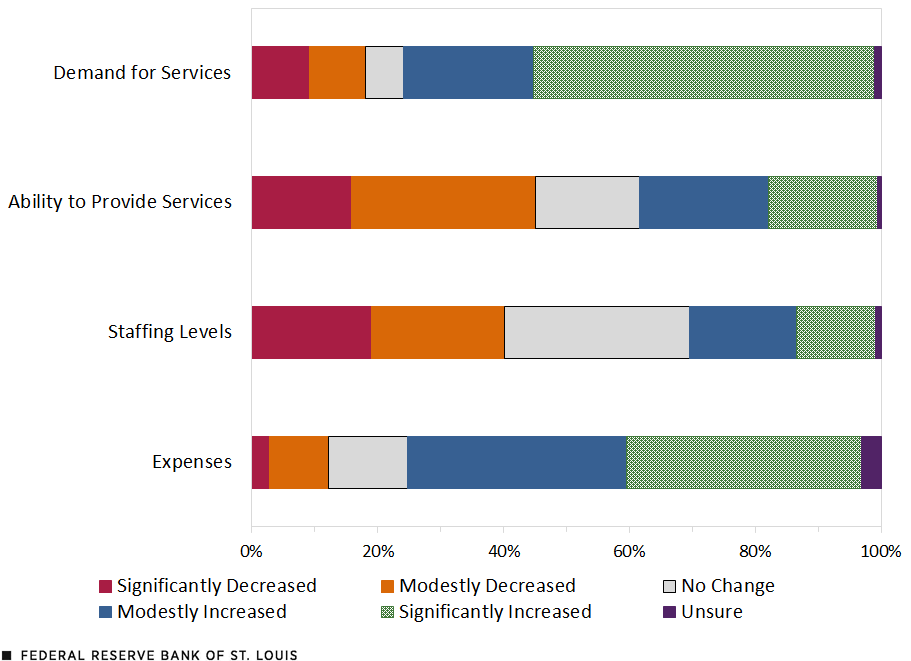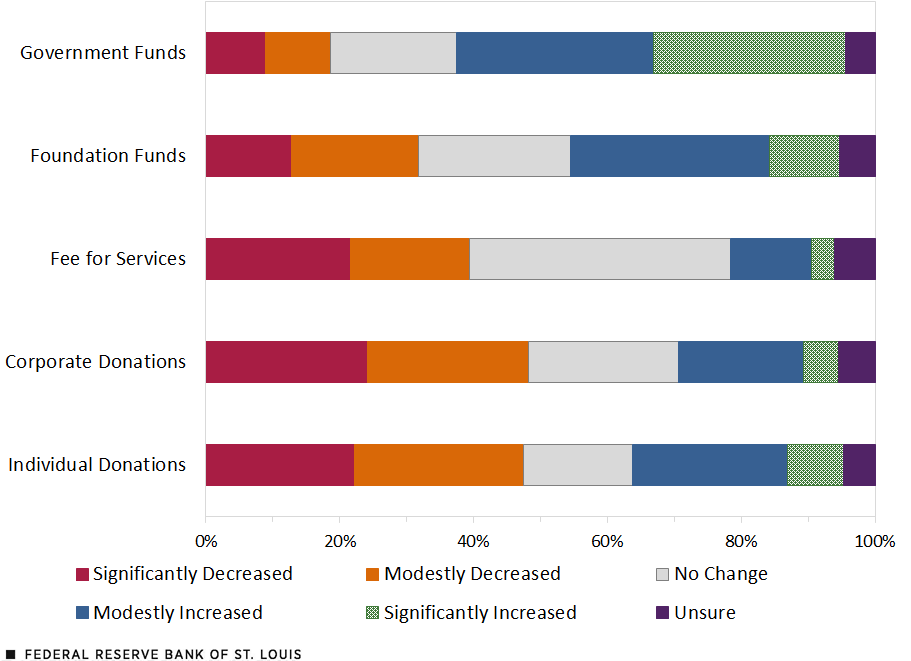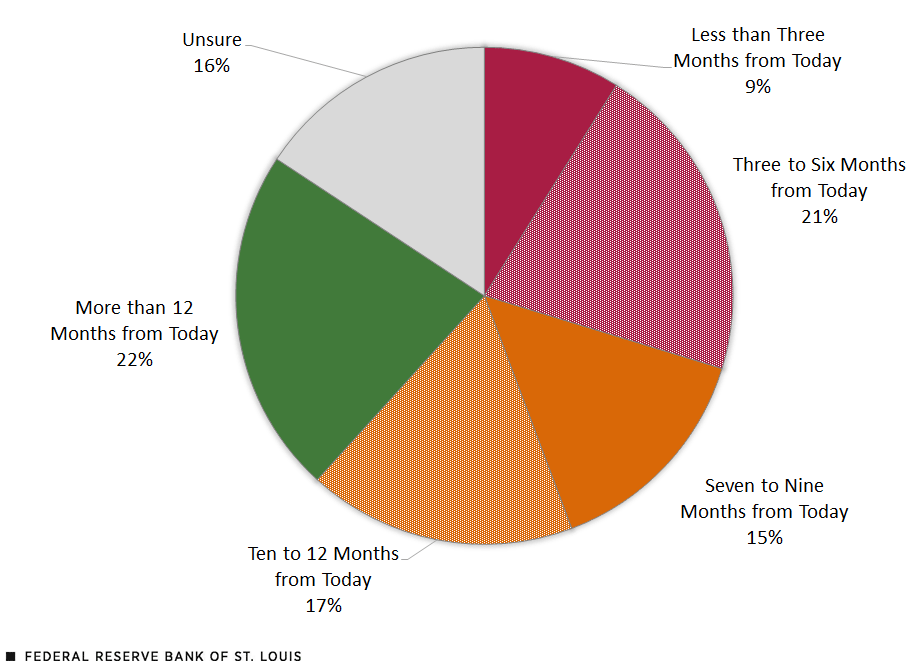Nonprofits Struggle in the Face of COVID-19
When the COVID-19 pandemic hit, organizations serving low- to moderate-income (LMI) communities sprung to action to provide vital services. As highlighted in a September 2020 Open Vault blog post, many organizations responded with food deliveries or information about accessing Paycheck Protection Program (PPP) loans. They played a significant role in providing regular services, as well as various pandemic-related ones, including vaccine education and distribution.
In August 2021, the community development function of the Federal Reserve System, together with eight national partners, administered the COVID-19 Community Impact Survey. One of the goals of this survey was to better understand the pandemic’s ongoing impact on these organizations, most of which were nonprofits.
This blog post focuses on respondents who reported that their nonprofit primarily serves LMI communities; the number of these respondents totaled 2,561. The nonprofit sector crosses multiple industries. It not only provides vital services but also is a significant part of the overall economy. According to the 2020 Nonprofit Employment report by the John Hopkins Center for Civil Society Studies, U.S. nonprofits are the third-largest source of payroll income behind manufacturing and professional services.
Many of these organizations operate with a model in which more services provided doesn’t always result in more revenue. This creates a challenging situation, especially during economic crises, where demand for such services increases while total revenue may remain stagnant or decrease.
Respondent profile:
- More than half said they primarily served communities of color.
- Thirty percent primarily serve rural areas, whereas almost 60% served urban.
- Primary issues on which respondents worked included housing, education, child welfare and family well-being, and health.
- Almost 40% had an operating expense of less than $1 million and another 40% had an operating expense budget between $1 million and $10 million.
The Pandemic’s Impact on Operations
To understand the changing impact of the pandemic, we asked respondents about the disruption their nonprofits faced during the peak of distress and during the survey period (August 2021). More than 70% of these respondents said their entities faced significant disruptions during the peak of the pandemic. However, only about a third said they faced significant disruptions in August 2021. Although this suggests that many organizations serving LMI communities are on the path to recovery, 61% noted they continue to face disruptions. There were no considerable differences in the current level of disruptions based on the type of communities they served, such as communities of color or urban versus rural.
Ongoing challenges include increased demand for services without a similar increase in the ability to provide services. When asked about current demand, more than half (54%) indicated that it has increased significantly compared with before the pandemic. However, when asked about their ability to provide services, more reported a decrease in that ability than those reporting an increase (a difference of 7 percentage points). Additionally, out of those 75% respondents who reported an increase in demand, those who saw a corresponding increase in their ability to provide services exceeded those reporting a decrease by only 8 percentage points.
Survey Question: Comparing the Current Situation with Pre-
Pandemic Conditions, How Is COVID-19 Impacting
Nonprofit Operations?

SOURCE: Perspectives from Main Street: The Impact of COVID-19 on Communities and the Entities Serving Them, 2021.
NOTE: The survey was conducted in August 2021.
Regarding the ability to provide services, we asked about the change in staffing levels, expenses and revenue compared with before the pandemic. As the demand for services increased, the level of staffing decreased for 40% of entities compared with the pre-pandemic period. This could be for various reasons, including increased expenses, which were reported by more than 70% of the organizations.
The difficulty is compounded when we consider that across the five sources of revenue, more respondents noted an overall decreaseThis is calculated by combining the percentages of those answering “significantly increased” and “modestly increased” and then subtracting the percentages for those answering “significantly decreased” and “modestly decreased.” (i.e., the percentage of people reporting a decrease was greater than those reporting an increase), except for funding from foundations and the government.
Here is the summary of net difference for each:
- Individual donations—Net decrease: 16 percentage points
- Corporate donations—Net decrease: 24 percentage points
- Fees for services—Net decrease: 24 percentage points
- Foundation funding—Net increase: 8 percentage points
- Government funding—Net increase: 39 percentage points
The next figure provides a glimpse of how respondents categorized the change in each of the five revenue sources.
Survey Question: Comparing the Current Situation with Pre-
Pandemic Conditions, How Is COVID-19 Impacting
Nonprofit Funding?

SOURCE: Perspectives from Main Street: The Impact of COVID-19 on Communities and the Entities Serving Them, 2021.
NOTE: The survey was conducted in August 2021.
The prolonged imbalance between increasing demand for services and no similar increase in their ability to provide services has taken a toll on these organizations. More than half of the respondents indicated the pandemic has had a negative impact on their current financial health. Of those, 62% said their nonprofit, based on current resources, in a year or less would exhibit financial distress, including reducing services, laying off staff, closing locations or shutting down entirely.
Survey Question for Those in Nonprofits Hurt Financially by COVID-19: How Long Can Your Nonprofit Operate before Exhibiting Financial Distress?

SOURCE: Perspectives from Main Street: The Impact of COVID-19 on Communities and the Entities Serving Them, 2021.
NOTES: Only respondents who said COVID-19 had a negative impact on the financial health of their entities responded to this question. The survey was conducted in August 2021.
Organizations working with LMI communities have seen the direct impact of the pandemic. Additionally, they have faced obstacles while trying to provide for increasing demand. To continue to improve our understanding of the challenges faced by these organizations, we held a discussion with three nonprofit leaders in early December. You can watch a recording of the discussion to learn how organizations serving the most vulnerable in society continue to navigate the health and the economic crises brought by COVID-19.
Endnotes and References
- This is calculated by combining the percentages of those answering “significantly increased” and “modestly increased” and then subtracting the percentages for those answering “significantly decreased” and “modestly decreased.”
This blog offers commentary, analysis and data from our economists and experts. Views expressed are not necessarily those of the St. Louis Fed or Federal Reserve System.
Email Us
All other blog-related questions



